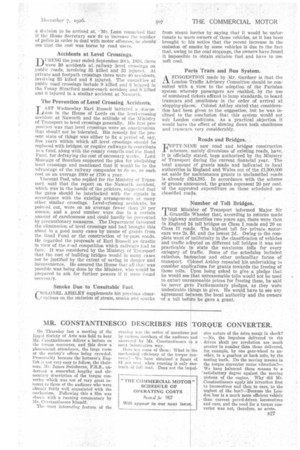MR. CONSTANTINESCO DESCRIBES HIS TORQUE CONVERTER.
Page 53

If you've noticed an error in this article please click here to report it so we can fix it.
On Thursday last a meeting of the Royal Society of Arts was held to hear Mr. Constantinesco deliver a lecture on the torque converter, and this drew a phenomenal attendance, the large room at the society's offices being crowded. Presumably because the lecturer's English is not very easy to follow, the chairman, Mr. James Swinbnrne, F.A.S., undertook a somewhat lengthy and elementary description of the torque converter which was not of very great interest to those of the audience who were already fairly well acquainted with the mechanism. Following this a film was shown with a running commentary by Mr. Constantinesco himself.
The most interesting feature of the evening was the series of questions put by various members of the audience and answered by Mr. Constantinesco ih a most informative way.
Here are some of them: What is the mechanical efficiency of the torque converer?—We have obtained a figure of Si per cent, when running it only onetenth of full load. DOCEl not the impal sive nature of the drive result in shock? —No, the impulses delivered to the driven shaft per revolution are much greater in number, than those delivered, for example, by one gear-wheel to another, in a gearbox or back axle, by the mating teeth. Do the moving masses in the torque converter cause vibration?'— We have balanced these masses to a 'satisfactory degree against the moving pistons of the engine. Why did Mr. Constantinesco apply his invention first to locomotives and then to cars to the neglect of the bus?—Because the London bus is a much more efficient vehicle than current petrol-driven locomotives and cars, and the need for a torque converter was not, therefore, so acute.




















































































































